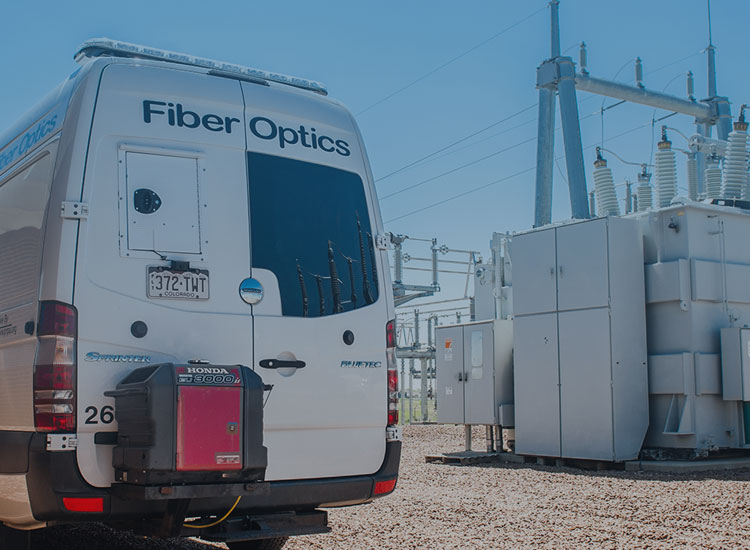Fiber optics communications system
Commercial operations: 1999
Net capacity: 144 fiber ring that surrounds three of Platte River’s owner communities - Longmont, Loveland, and Fort Collins - and a 72 fiber ring in Estes Park
Bandwidth: Up to 10 gigabytes
Transmission type: Voice and data
Operations
- The rings are completely redundant with no single point of failure
- The owner communities assumed ownership of excess capacity fiber in their respective local loops for high-speed internet
- Substation rings are deployed over a high speed SONET network ensuring fast, secure and reliable operation of the transmission system
- Platte River utilizes 12 fibers for transmission operations, metering, phone, SCADA, security and billing systems
- Owner communities use fiber for distribution operations, traffic, IT and billing
Financials
- Platte River installed a comprehensive fiber optic communication system in 1999 at a cost of approximately $8 million
- Platte River partnered with the communities to utilize a mix of overhead distribution and underground electric conduit systems to keep original installation costs down
- Platte River has returned approximately $7 million dollars of fiber revenue gained as a result of leasing dark fiber (unlit excess capacity available for use) to Fort Collins, Loveland and Estes Park utilities
Environmental
- Fiber optics (glass) have replaced the use of copper, aluminum and other metals previously required for the transport of voice, data, and internet traffic
- Fiber is a safer and more efficient transport medium than metals which require the use of low voltage electricity and current to deliver content
Platte River's fiber history
Until the late 1990s, Platte River used radios, power line carrier and leased phone lines to operate its transmission system assets and electrical generation. These tools were also used to coordinate regional hydro power and electrical transmission services provided by the federal government.
In 1998, Platte River’s Board of Directors approved the funds necessary to modernize the communications network across its service territory. Leadership then began the process of constructing a fiber optic network to digitally enable seamless integration between generation and transmission resources as well as the distribution systems of the owner communities. Because fiber installation, not the strand count within a cable itself, is where the bulk of the cost resides, Platte River added more fiber capacity than it needed to support the future communication needs of its owner communities.
Since construction, excess fiber strands within the network have been made available for lease. The fiber optic network quickly became the regional communication backbone providing essential high-speed connectivity for governmental and commercial communication.
In fact, the fiber optic network provided a lifeline in an extreme time of need. During the 2013 flood in Estes Park, Platte River bypassed severed communications lines by using excess fiber capacity to re-establish communications among emergency responders, health care institutions, law enforcement, municipal services and recovery organizations.
The City of Longmont was the first community to take ownership of its excess capacity fibers within the fiber optic network. They have since established a municipal broadband service that is nationally recognized for its high quality and speed.
In December 2018, Platte River’s Board of Directors approved an inter-governmental agreement enabling Platte River to transfer excess capacity fiber to the remaining communities of Estes Park, Fort Collins, and Loveland. Each community is beginning to develop high-speed telecommunication services for their respective customers.
Going forward, Platte River is committed to maintaining and supporting the fiber optic network and the communication needs of our owner communities.

